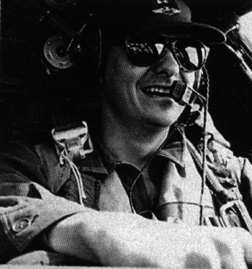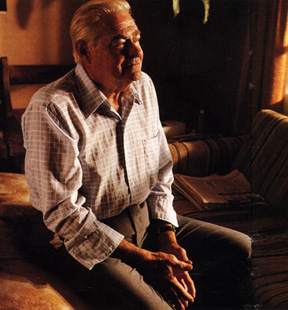 |
The Impact of U.S. Aerial Reconnaissance during the Early Cold War (1947-1962): Service & Sacrifice of the Cold Warriors |
 |
|||||||||||
|
Page 1 of 1 Pages Beyond the U-2 The Silent Warriors’ Service, Sacrifice and Mysteries RB-50 Crew’s Disappearance Personal Recollections of Capt. John Roche, Copilot Editor’s Note: This information is a supplement to Fred Ferrer’s report and is taken from the remarkably informative collection of information and stories contained in the U.S. News Report, “America’s Top-Secret SPY WAR”, March 15, 1993. “AN EYE FOR AN EYE” JULY 29, 1953: THE RB-50 The water, when he hit it, was exactly 68 degrees. It quickly filled his wristwatch, which stopped ticking at 6:20 a.m., but Capt. John Roche didn’t notice. His head was gashed from his right eye to the top of his skull, but Roche didn’t notice that either. He was too busy swimming clear of the aviation fuel that had leapt into flames around him. His Mae West kept Roche’s head above the water’s gentle chop as he picked his way through the plane’s debris. Some oxygen tanks, a sleeping bag – those he fashioned into a crude raft. Then he heard a shout. |
|||||||||||||
| A few more minutes and some labored paddling brought Roche face to face with Capt. Stanley O’Kelley. Roche, the copilot of the RB-50, had found his pilot. O’Kelley’s lips were horribly swollen. His hair and eyebrows were singed. “I asked him how I looked,” Roche recalled, and he said I looked pretty good. I told him he looked pretty good, too.” They were maybe 30 miles from the Soviet coast, bobbing groggily in the Sea of Japan. It was just about the last place John Roche and Stan O’Kelly ever expected to find themselves. An armistice in the Korean War had been declared just two days earlier.
The mission had been a routine one right till the end. From Yokota, O’Kelly and Roche had pushed the RB-50 on a course west northwest until they could make out the lumpy contours of the Korean peninsula. |
|||||||||||||
 |
|||||||||||||
|
of the RB-50 on a better day Photo: Ctsy U.S.News & World Report |
|||||||||||||
|
With its custom pitch-black underbelly, the big reconnaissance-bomber had turned right, ghosting the Soviet coast on a northerly tack dead-on toward the closed Soviet port city of Vladivostok. There O’Kelly and Roche made a 45 degree right turn followed by a hard right that took the RB-50 off the cost of Cape Povorotny. The route was designed to maximize the effectiveness of 1st Lt. Warren Sanderson and the other five Ravens stuck back in the rear of the big plane. Electronics specialists, the Ravens were assigned the task of identifying and monitoring air defenses all along the Soviet borders. Confined with their sweating electronic sensors, radarscopes and microwave transmitters into unbelievable cramped quarters they called the “crow’s nest” the Ravens were the unsung heroes of the ferret campaign.
|
|||||||||||||
| Until it was shot down, the RB-50 had encountered some problems, but nothing serious. At 5:59 a.m., O’Kelly took the plane into a final 95-degree turn to the right and made his heading for the long flight home. Exhausted, O’Kelly put the plane on autopilot, Roche lit a cigarette, and the rest of the crew began to relax.
Sixteen minutes later, disaster struck. Gunfire disabled the RB-50’s No. 1 engine. Seconds after that, a Soviet fighter Roche and O’Kelly took for a MiG-15 roared into view, red stars winking on both wings. There was more gunfire. Large-caliber rounds shredded the RB-50’s No. 4 engine, on the right side of the plane. Roche killed both engines, and O’Kelly depressurized the cabin and yanked the jump alarm. It rang incessantly as the plane cartwheeled into the sea. |
|||||||||||||
 |
|||||||||||||
|
Photo: Ctsy U.S.News & World Report |
|||||||||||||
| Notes from one who was involved in the the rescue: Msg. dated 5 February, 2005:
“The only information that I can add is, I was on board the USS Picking DD 685 when he was rescued, I was a Radarman 2nd class. We had just left our patrol of Yang-Do island in North Korean waters, when the truce was signed. We were about 12 hours out when we turned around and headed back north. We were told that the Russians had shot down a plane that was on weather patrol with 16 or 17 men aboard. We were about 17 miles from Vladivostok when he was spotted and picked up.” |
|||||||||||||
|
End of Page 1 of 1 Pages Chapter 5 — Roche Personal Story Return to Page 3 of Chapter 5 or You may go to Page — 1 — 2 — 3 — 4 — 5 — this chapter or you may go to Cover Page — Editor’s Introduction — Overview Acknowledgments — Table of Contents Appendixes — A — B — C — D |
|||||||||||||